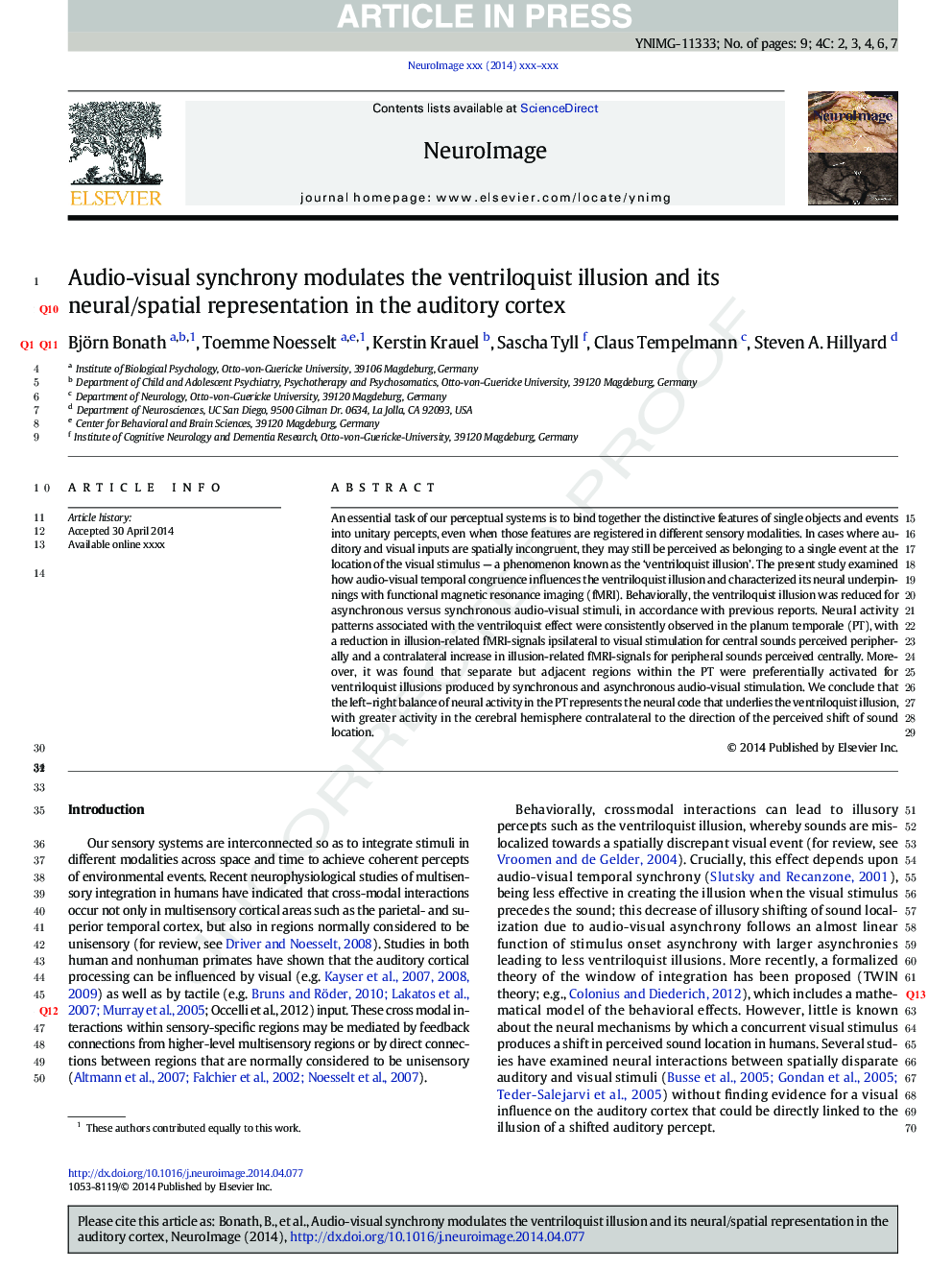| Article ID | Journal | Published Year | Pages | File Type |
|---|---|---|---|---|
| 6026996 | NeuroImage | 2014 | 9 Pages |
Abstract
An essential task of our perceptual systems is to bind together the distinctive features of single objects and events into unitary percepts, even when those features are registered in different sensory modalities. In cases where auditory and visual inputs are spatially incongruent, they may still be perceived as belonging to a single event at the location of the visual stimulus - a phenomenon known as the 'ventriloquist illusion'. The present study examined how audio-visual temporal congruence influences the ventriloquist illusion and characterized its neural underpinnings with functional magnetic resonance imaging (fMRI). Behaviorally, the ventriloquist illusion was reduced for asynchronous versus synchronous audio-visual stimuli, in accordance with previous reports. Neural activity patterns associated with the ventriloquist effect were consistently observed in the planum temporale (PT), with a reduction in illusion-related fMRI-signals ipsilateral to visual stimulation for central sounds perceived peripherally and a contralateral increase in illusion-related fMRI-signals for peripheral sounds perceived centrally. Moreover, it was found that separate but adjacent regions within the PT were preferentially activated for ventriloquist illusions produced by synchronous and asynchronous audio-visual stimulation. We conclude that the left-right balance of neural activity in the PT represents the neural code that underlies the ventriloquist illusion, with greater activity in the cerebral hemisphere contralateral to the direction of the perceived shift of sound location.
Related Topics
Life Sciences
Neuroscience
Cognitive Neuroscience
Authors
Björn Bonath, Toemme Noesselt, Kerstin Krauel, Sascha Tyll, Claus Tempelmann, Steven A. Hillyard,
